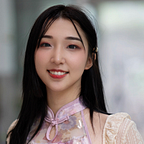Kicking off
Going back to high school :’)
Initial Research
For the first sprint, the team started by analyzing the project brief, underlining key terms, and identifying questions we had. We wrote the questions down on sticky notes and later clustered them. Though many questions are factual, the affinity diagramming activity has helped surface over-arching themes to be investigated, such as South Fayette’s basic info, policies, stakeholders, psychology, learning science, existing self-motivated learning platforms, and more. We contacted faculties and education specialists to establish a network and get their thoughts on potential topics.
Considering time constraints and the breadth of topics, the team combined primary and secondary ways of gathering information.
- Secondary: Literature reviews and domain survey comparative studies were used to understand the domain, the client, and the stakeholders we will be working with. The comparative studies were immensely helpful — we did them for the IB Diploma In addition, self-motivated learning apps such as Duolingo gave us insights into existing solutions and their resolutions’ shortcomings. Workflow-wise, the team divided up the research topics and later shared findings and insights. All the materials are recorded on a page within the team notion for easy sharing.
- Primary: Similarly, for primary interviews, we reached out to professional researchers in the field of education, as well as school teachers and recent graduates and their parents. The loosely structured interview gave rise to more research topics within the context of Pennsylvania’s public education system.
The team’s affinity diagram of research insights a week in.
Kickoff Meeting
As we write this post, we have yet to have the client kickoff meeting. We have already had a touch-base meeting with the client via Zoom, where we introduced ourselves and asked the factual questions we couldn’t find answers to online. During the meeting, we loved hearing about our client’s passion for shaping the future of education, which further fueled our dedication to the project. The official kickoff meeting will take place Friday, February 3rd. The primary goal is to validate our understanding of the problem space.
The team discussed the most valuable design activity we could do during the kickoff meeting to get the most out of our time with our client. Early ideas, such as Rose Bud, Thorn, and making clients play out a day at SF High, might have asked too much from non-UX designers or lacked a clear goal. After consulting with faculties, the team decided on an activity where we present our progress and let the client jot down thoughts, insights, examples, etc., about how the research findings related to their experiences. After that, we will conduct an affinity diagramming activity with the sticky notes they wrote. Through such a design activity, we hope to not only validate our research direction but implicitly probe clients’ interests that they may find hard to put accurately into words.
Logistics & Moving Forward
Team members are in the process of getting child protection clearance. Hopefully, we can get everything sorted out before the end of the next sprint.
The goal for the next sprint is to have a clearer definition of a problem space and define an appropriate research method. We look forward to conducting field research with SF High students and teachers!
